Modernity's Classical Past: On Lala Deen Dayal's Photography
Modernity's Classical Past: On Lala Deen Dayal's Photography
Modernity's Classical Past: On Lala Deen Dayal's Photography
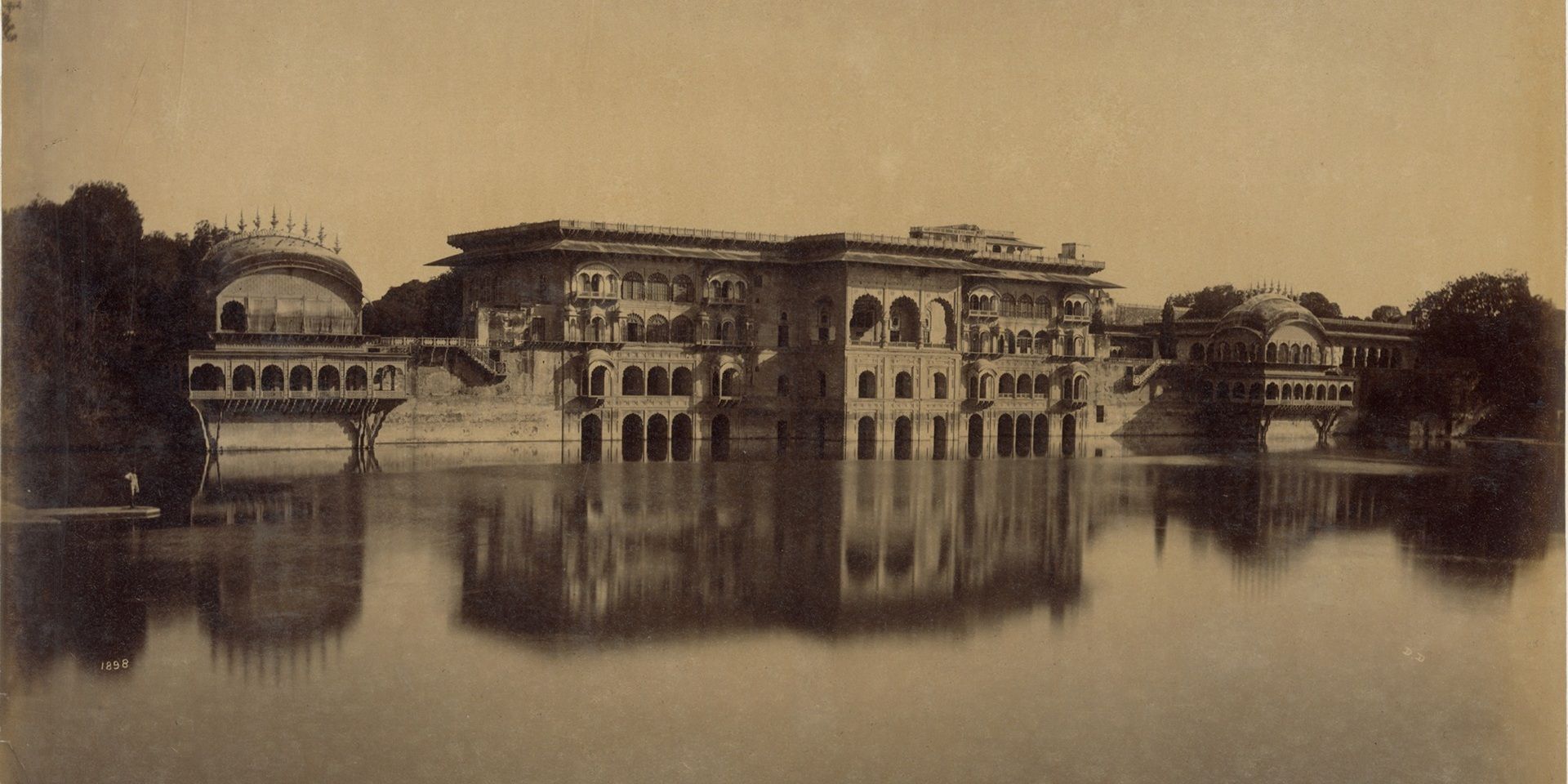
Lala Deen Dayal, The Great Water Palace, Deeg, Bharatpur (detail), Silver albumen print mounted on card, 1885, Print size: 8.5 x 11.2 in. / 21.5 x 28.4 cm. Collection: DAG
Lala Deen Dayal (1844—1904) was a pioneering Indian photographer in British India who captured several architectural and landscape views of India, as well as the lives of the colonial and native elite in the late nineteenth century. How did he become one of the pioneering Indian photographers of the nineteenth century?
Born into a family of jewellers in Sardhana, Meerut, Deen Dayal received technical training at the Thomason College of Civil Engineering at Roorkee in 1866, which is often cited as the relevant kind of training that would allow him to bring ‘into his photography the techniques of surveying’, as the historian Sudeshna Guha puts it. He began his career as a surveyor and draughtsman in the Public Works Department in Indore, where he measured and documented the land through photographs.
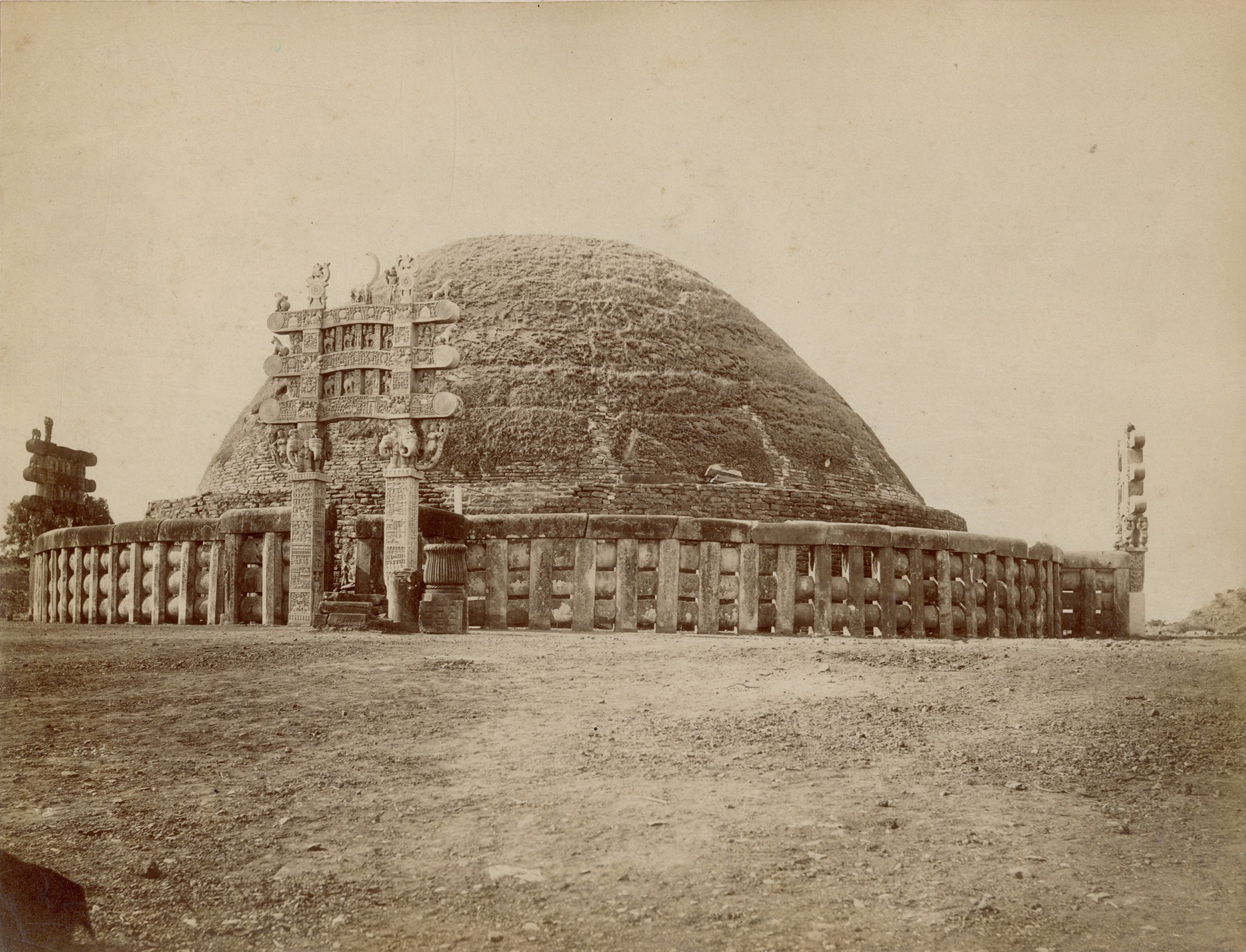
Lala Deen Dayal, Sanchi Stupa, Silver albumen print mounted on card, c. 1880, Print size: 8.2 x 10.5 in. Collection: DAG
Deen Dayal's photography career took off in the mid-1870s when he began receiving commissions from Maharajas and the British Raj. He established studios in Indore, Secunderabad and Bombay, and became the court photographer to the sixth Nizam of Hyderabad, who awarded him the title ‘Raja Bahadur Musavvir Jung Bahadur’ or ‘Bold Warrior of Photography’. Deen Dayal's photographs were instrumental in serving the interests of both the colonial government and the princely states by reflecting the interactions between both groups.
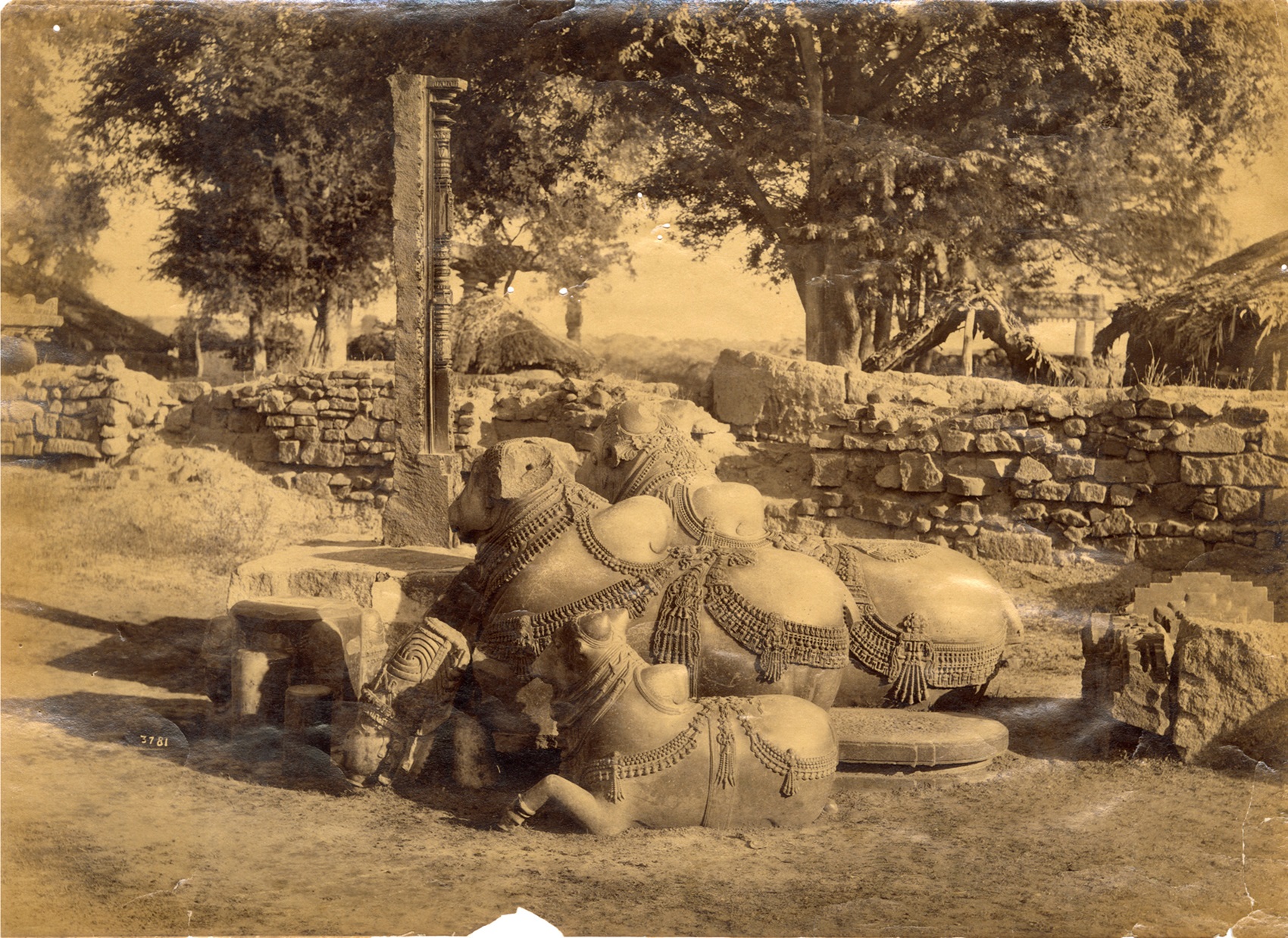
Lala Deen Dayal, Nandias in Warungal Fort (Nandi Bull, Warangal Fort), Silver albumen print, 1888, Print size: 7.7 x 10.7 in. Collection: DAG
Deen Dayal's work spanned diverse photographic categories including society and commercial portraiture, documentation of significant events, and topographical and architectural photography. His photographs of India's great temples and monuments, often including a tiny human or animal for scale, form a record of India's cultural patrimony at a time when the colonial concept of the picturesque was being made to interact with modern technologies of visualising landscapes, of which the camera that took photographs was a prime example, along with the railways, for instance. Writing about his photograph of the newly built ‘Bhopal State Railway’, which features a near-picturesque scene of a steam engine pulling away along curving tracks, with smoke billowing out, Sudeshna Guha notes, ‘It forestalls many histories and creates a critical regard of the photographic encounter. We see it variously—as the brilliance of a native photographer of India, a document of the rise of the Bhopal State and its investments into projects of modernity, and as a memento of the two seminal technological innovations of the nineteenth century, photography and steam engine. Both transformed the ways in which India was seen, mapped and accessed by the British, and opened up immense possibilities of publicly challenging and resisting their rule.’
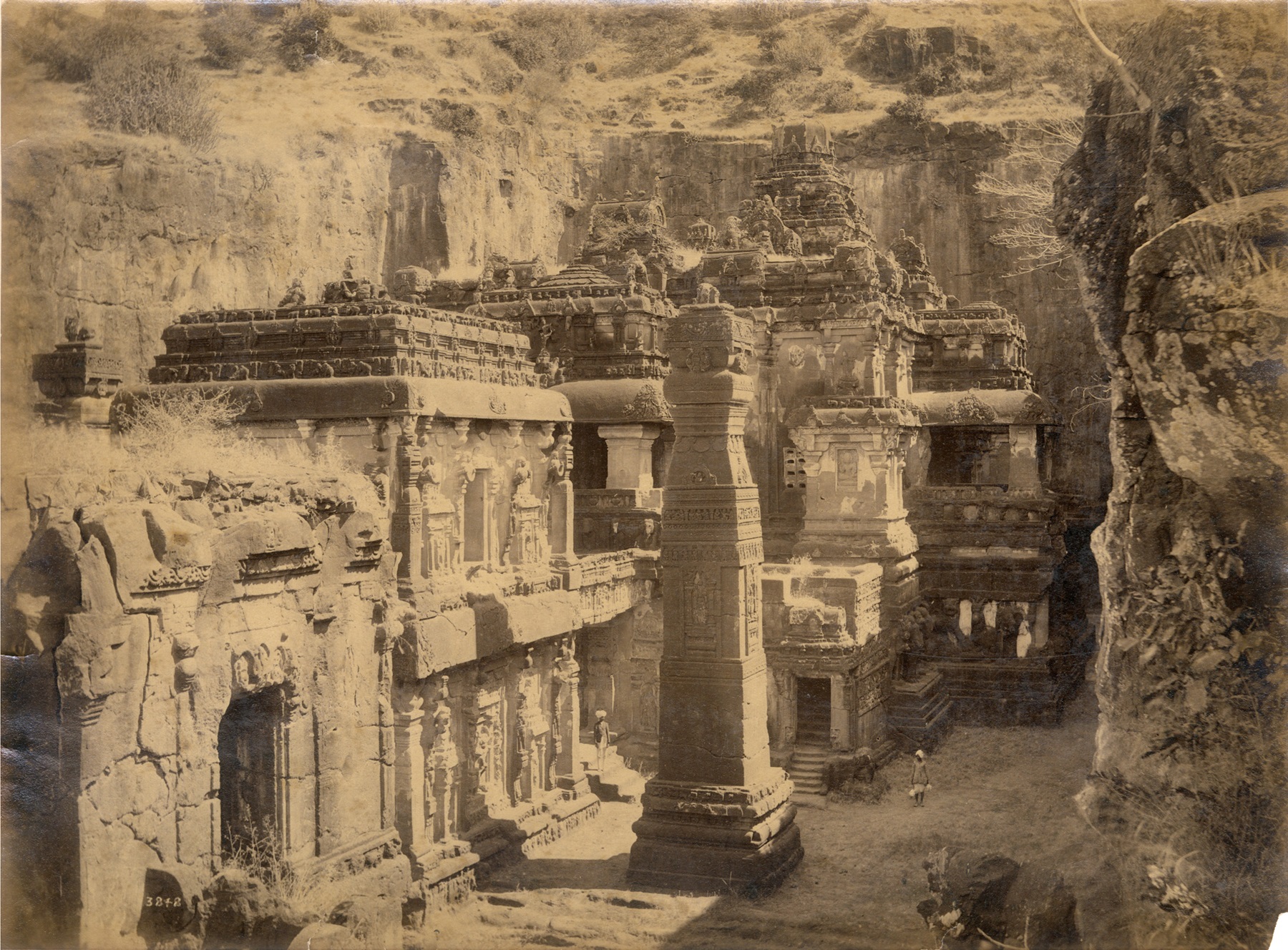
|
Lala Deen Dayal, Ellora, Kailasa Temple, Silver albumen print on paper, 1888, Print size: 8.0 x 10.7 in. Collection: DAG |
Deen Dayal’s photography would also be conducted in the context of innovations in painting, as photographic realism began to assume registers of ‘transparency’ that painting struggled to imitate. Socially speaking, however, it would take much longer for the art of painting to lose its preeminent position as a primary medium of choice for wealthy patrons. Writing about the inter-relationship between painting and photography at the time, the Raja Ravi Varma scholar Rupika Chawla suggests that Deen Dayal ‘brought to photography what Varma brought to paintings—the pomp and grandeur of kings... with the documentation of places and events.’
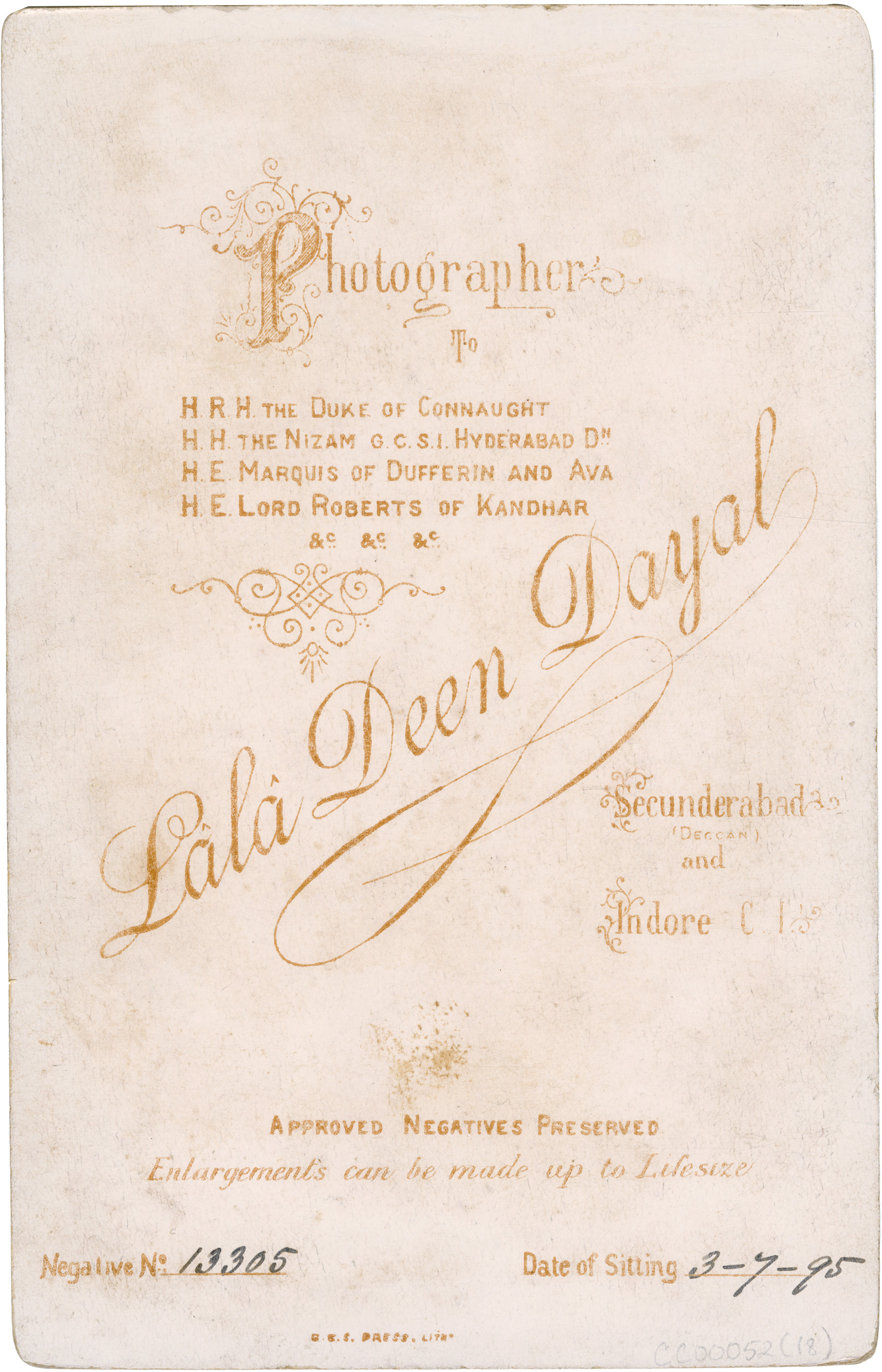
|
Lala Deen Dayal, Secunderabad (Deccan) and Indore C.I, Printed card, late 19th century, 6.5 x 4.2 in. Collection: DAG |
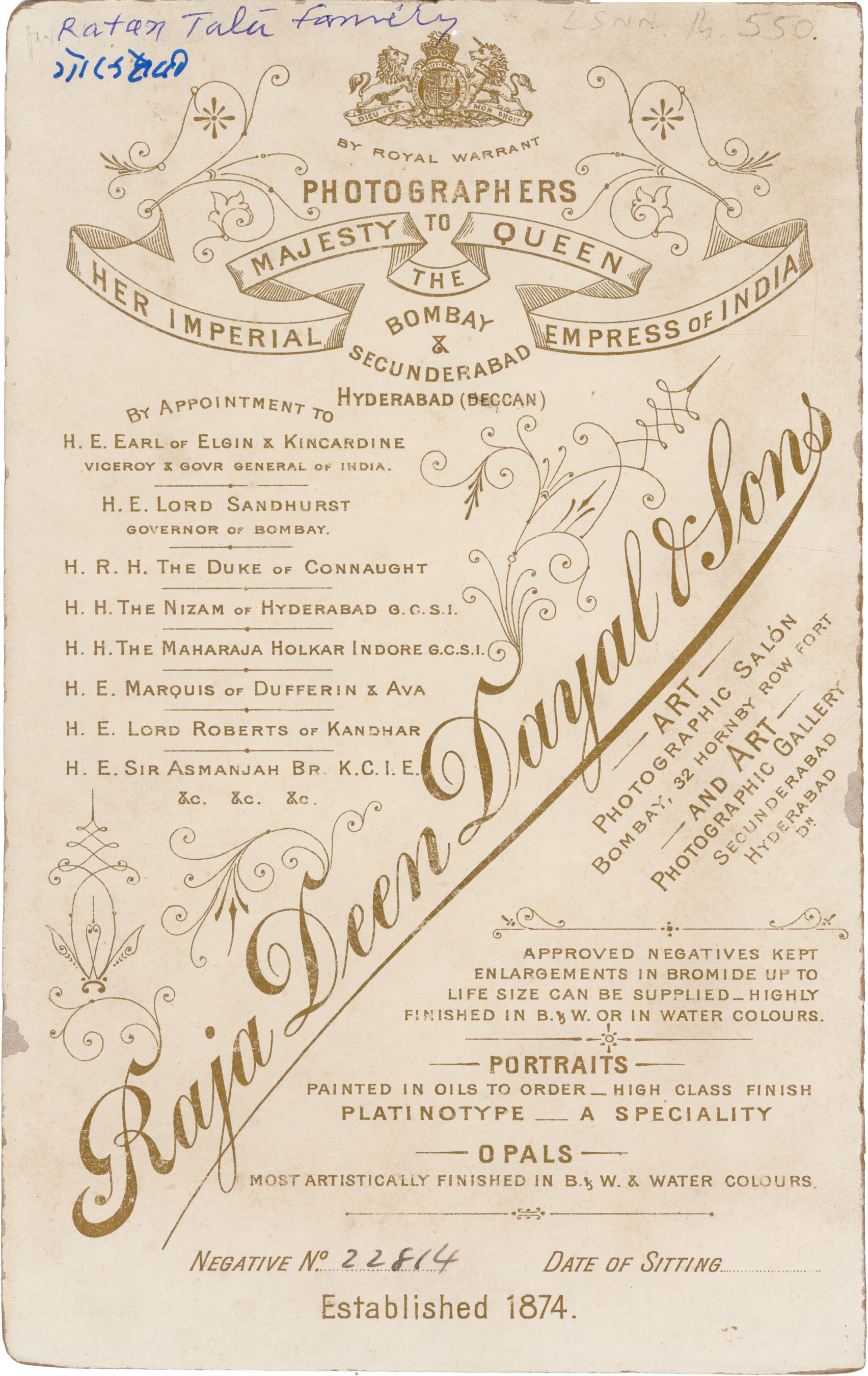
|
Raja Deen Dayal & Sons, Bombay Secunderabad Hyderbad D,
Printed card, early 20th century,
6.5 x 4.0 in. Collection: DAG
|
His images of the Taj Mahal, the Qutub Minar, and other historical sites are celebrated for their meticulous detail and artistic quality. Some scholars suggest that ‘(h)is photographs of iconic monuments were instrumental in preserving their legacy at a time when colonial interests often sought to reframe Indian history through their own lens’; a claim that assumes an essentially Indian way of taking photographs that others have critiqued. However, his photographs were crucial documents of the time that throw a light on Indian photographic practices and their own approach to recording their cultural heritage.
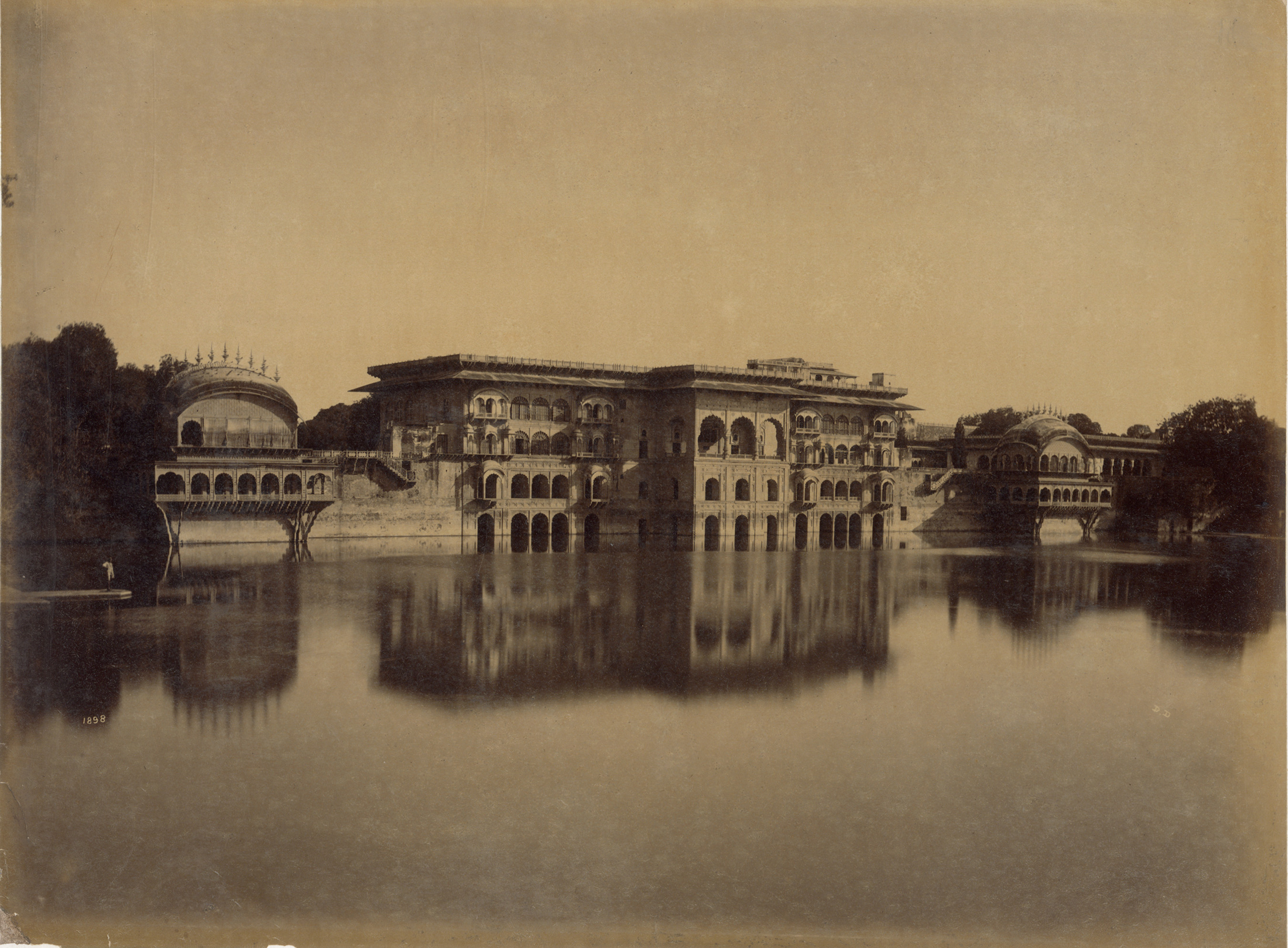
Lala Deen Dayal, The Great Water Palace, Deeg, Bharatpur, Silver albumen print mounted on card, 1885, Print size: 8.5 x 11.2 in. Collection: DAG
Deen Dayal's legacy extends beyond his photographs to being a visual record of India's history through the lens of one of India's earliest and most celebrated photographers who managed to run commercially successful photography studios in the country. The Lala Deen Dayal studios' collection of 2,857 glass plate negatives, now the largest repository of his work, was bought by the Indira Gandhi National Centre for the Arts (IGNCA), New Delhi in 1989.

Lala Deen Dayal, Dowlatabad Fort (Daulatabad Fort), Silver albumen print on paper, 1888, Print size: 7.7 x 10.5 in. Collection: DAG
Deen Dayal was a pioneering Indian photographer who captured the opulence of palaces, the wonder of famous monuments and stark landscapes, as well as the lives of the colonial and native elite in late nineteenth century India. His documentation of Indian monuments, ruins and structures are iconic in ways that have shaped the study of archaeology and architecture in the Indian subcontinent—and some of these works are on view at DAG’s new exhibition, Histories in the Making: Photographing Indian Monuments, 1855—1920. His photographs offer vivid insights into India's rich cultural heritage and are valuable testimonials for historians, cementing his legacy as India's first professional photographer to gain international renown.
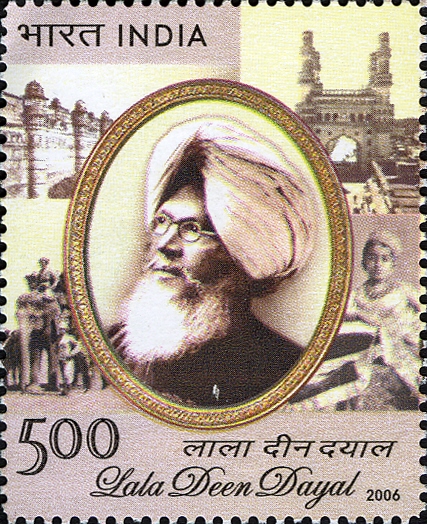
|
A commemorative stamp issued by the Indian government in 2006 celebrating Lala Deen Dayal. Image courtesy: Wikimedia Commons |


